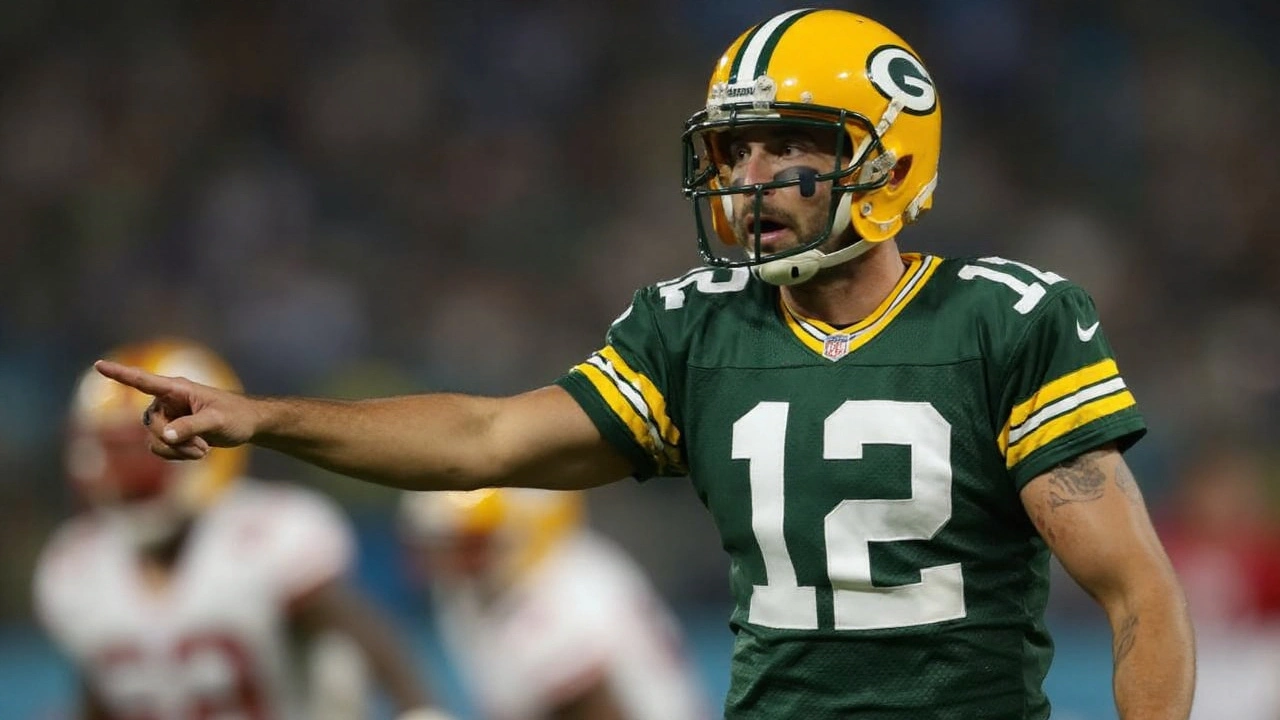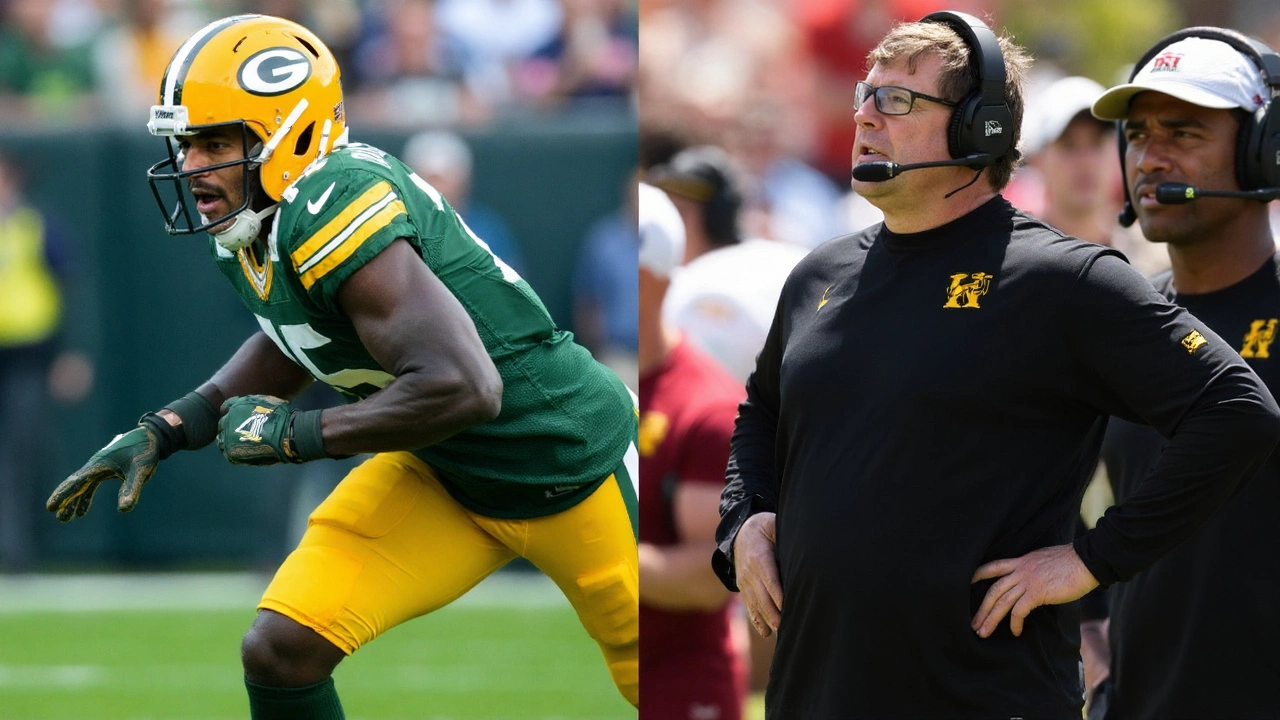Quinn's quip and the reunion stakes
Asked how he would handle Micah Parsons this week, Washington Commanders head coach Dan Quinn cracked a grin and deadpanned: "I'd sit him this week. Yeah, short week." That punch line landed because everyone in the room knew the truth behind it: few players tilt a game plan the way Parsons does.
Quinn knows better than most. For three seasons in Dallas, he helped turn Parsons from a first-round athlete into a nightmare off the edge. That history adds an odd twist to Thursday night, with the Commanders facing Green Bay and Quinn game-planning against his former star for the first time since the surprise trade that sent Parsons to the Packers. Quinn admitted he was caught off guard by the move, and he called coaching Parsons "an absolute blast."
Washington has seen enough of Parsons to understand what is coming, even in a new uniform. Quarterback Jayden Daniels, who has felt that closing burst in person, put it plainly: "You don't let game-wreckers wreck the game." That means locating Parsons before the snap and never losing track of him after.
Parsons' Packers debut showed how little time he needs to leave a mark. Nursing a back issue and still learning a new defense, he played only 29 snaps in Week 1 against Detroit — just under 45 percent of the defensive total — and still posted a sack and three pressures. According to Next Gen Stats, he generated a pressure on his very first snap with Green Bay. That is the kind of instant disruption that forces an offense to change what it calls next.
The tape showed a clear plan. Green Bay put Parsons off the left edge on 22 of his 29 snaps, testing Lions right tackle Penei Sewell with speed, angles, and a jump off the ball that is hard to simulate. Against Washington, that spot would put him across from rookie right tackle Josh Conerly Jr., a talented athlete who is learning NFL timing on the fly. Expect the Packers to hunt that matchup early, then move Parsons if Washington adjusts.
Quinn highlighted the trait that causes the most problems: rare speed. In Dallas, he said, Parsons was one of the fastest players on the roster — not for a linebacker, for anyone. Those first two or three steps are where he wins. For offensive tackles, especially younger ones, that burst shows up as panic: shortened kick slides, hands that shoot late, and space that vanishes faster than it does in practice. And on a short week, there is no time to slow it down with extra full-speed reps.
Thursday night also compresses preparation across the board. Walk-throughs replace padded work. Protections that normally get a full day of trial-and-error have to be clean on the hotel ballroom carpet. That rewards defenses that can keep things simple and let a star play fast. Green Bay does not need to get exotic to unlock Parsons; lining him wide, slanting him inside, or looping him on a stunt is often enough.
There is another layer: even when Parsons does not get home, he changes the math. Offenses devote a tight end to chip, slide the center his way, or hold a back in protection. That attention creates one-on-ones for everyone else. The stat sheet might show a quiet quarter, then a drive flips because a guard widened one step too far to snuff out a ghost of a speed rush.

How Washington can blunt Parsons' impact
The Commanders do not have to stop Parsons to win. They have to keep him from setting fire to a quarter. That is a different goal, and it is doable if they stack small edges across the night.
- ID him first. Treat Parsons like a blitzer even when he is not. Make him the protection point. If he moves, slide with him.
- Change the launch point. Rollouts, bootlegs, half-rolls, and sprints put the QB outside the normal spot. Parsons hates guessing wrong; make him choose and waste steps.
- Use chips with purpose. A tight end or back should hit him hard, then release into the flat. Do not waste a body. Make Green Bay cover every blade of grass.
- Mix cadence. Hard counts and late snaps can slow his get-off. The goal is to steal half a beat, not draw flags.
- Call it quick. Hitches, slants, speed-outs, RPOs, and screens cut the pass rush out of the picture. If the ball is gone in 2.2 seconds, even elite rushers are bystanders.
- Run at him, then away. Early downhill runs force him to take on blocks, not just run around them. Later, use draws and misdirection to punish that upfield charge.
- Throw on first down. Passing downs invite NASCAR packages. Keep Green Bay in base so they cannot pin their ears back.
The matchups will be under a microscope, especially on the right edge. Conerly is long and athletic, but he will be tested by Parsons' first step and counter move. The rookie's best ally is timing: get out of the stance clean, strike with inside hand first, and trust help to arrive when called. If Washington can make Parsons go through layers — tackle's set, then a chip, then a slide — it turns splash plays into five-yard wins for the defense instead of drive-killers.
Daniels has a role here, too. Mobility is a problem-solver and a trap. If he holds the ball and bails out the back door, Parsons will chase him down. But if Daniels is decisive — climb the pocket, take five yards on a scramble, live for second-and-5 — he can make the rush pay. Sliding, not trying to win a footrace to the sideline, saves hits and possessions.
Expect Washington to test Green Bay's answers with tempo. A no-huddle stretch forces the defense to show who is rushing and where. It also makes it tougher to substitute, which can keep Parsons from getting the perfect rush-down rotation he had against Detroit. On the flip side, long, methodical drives sap a pass rusher's legs. If the Commanders can turn second quarters into 12-play marches, Parsons' fourth-quarter pop won't be the same.
Green Bay will counter by moving their chess piece. If Washington overloads help to the right, the Packers can flip Parsons to the other side for a series and chase a mismatch on the left. They can also mug him in the B-gap next to a defensive tackle, forcing a guard-tackle combo to pass off a stunt without busting. Even simple line games become scary when the guy looping is No. 11.
There are also hidden downs to watch. Third-and-2 can be as dangerous as third-and-10 if the call is play-action with a deep shot built in. Parsons' quick win off the edge in a short-yardage look can create a sack-fumble if the quarterback's eyes are downfield. Washington's best answer is to stay on schedule and keep those calls balanced — run the ball enough that Green Bay has to respect it, then throw when the box is heavy.
Quinn's comments about speed cut to the heart of Thursday night. You cannot recreate Parsons at practice. You can only train your eyes and stick to rules. That is why Washington's protection plan needs to be simple, loud, and repeatable: call the slide, trust the chip, hit your landmark, and get the ball out. If they do those things, Parsons will still flash. The difference is he won't flip the game alone.
This matchup is more than a reunion. It is a test of how quickly Green Bay can fold a star into its system, and how quickly Washington can build a week-specific plan around a single player. Parsons showed in Week 1 that even on a pitch count he can affect timing, field position, and play-calling. Now he faces a coach who helped write the playbook on him — and a quarterback who knows the cost of looking the wrong way for one beat.
Washington used to see Parsons twice a year in a Dallas helmet. They were glad to be rid of that. Turns out there is no clean escape. He shows up again on a short week, in a different shade of green, with the same mandate: bend the game toward himself. How much he bends it will decide how long this one feels for the Commanders' sideline.
